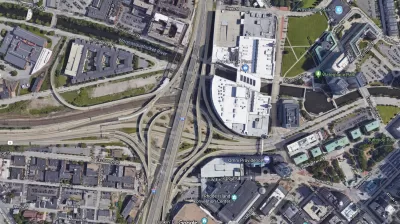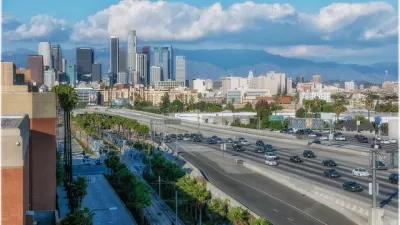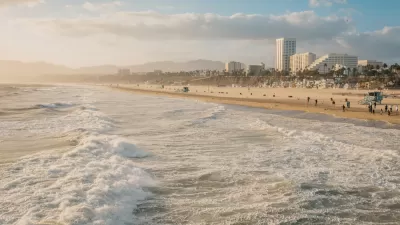The erroneous belief that the negative impacts of interstate highways are simply "unintended consequences" fails to demand accountability for the project's failures.

Writing in The Metropole, Sarah Jo Peterson argues that the popular origin story of the American interstate highway system is, at its core, a myth. "The myth goes something like this: the Interstate Highways were intended to be a system for intercity (or interstate) travel, but they had unintended effects for cities because they became used inappropriately for travel within urban areas." This myth, Peterson writes, perpetuates several erroneous beliefs: that "everything bad about the Interstates in cities is actually the fault of urban renewal and city leaders;" that "analyses of costs dictated which neighborhoods fell to the bulldozers;" and that despite initial mistakes, "public protests in the 1960s brought needed reforms."
Continued acceptance of this myth, Peterson claims, "prevents the industry from having to directly confront the sins committed in the name of the Interstate Highways, most significantly against Black Americans." The danger, she writes, is that the myth and the silence surrounding it "shape American transportation policy and practice in unacknowledged ways" to this day. Despite repeated attempts by the federal government to address historical injustices in transportation policy, the needle hasn't moved significantly where the communities affected by freeway construction are concerned.
Peterson traces the problematic myth to a U.S. Department of Transportation brief written in 1976, which became embedded in transportation planning curriculum. The author, Peterson claims, "actively constructed an alternative history," continually citing displacement and the other effects of urban freeways as "unintended" consequences.
"Weiner’s key studies—and more—are now online for all to see. Five reports, two published before 1956 and three shortly after, show that in no sense was the Interstate System intended only for intercity travel. Moreover, the assertion that the consequences of the Interstates in urban areas were 'unintended'—at least for what they called the 'total transportation needs' of the metropolis and the displacement of minority communities—is untenable. Top leaders anticipated these impacts, and yet the efforts they made to address them fell short."
Ultimately, Peterson argues that historical analysis is crucial to understanding and undoing the inequities of past and present transportation policies. "The federal government was–and always will be–a leader both in developing the Interstate System and in how its history is remembered. The federal government also needs to be a leader in helping the transportation industry understand the impacts of its history."
FULL STORY: The Myth And The Truth About Interstate Highways

Alabama: Trump Terminates Settlements for Black Communities Harmed By Raw Sewage
Trump deemed the landmark civil rights agreement “illegal DEI and environmental justice policy.”

Study: Maui’s Plan to Convert Vacation Rentals to Long-Term Housing Could Cause Nearly $1 Billion Economic Loss
The plan would reduce visitor accommodation by 25% resulting in 1,900 jobs lost.

Planetizen Federal Action Tracker
A weekly monitor of how Trump’s orders and actions are impacting planners and planning in America.

Waymo Gets Permission to Map SF’s Market Street
If allowed to operate on the traffic-restricted street, Waymo’s autonomous taxis would have a leg up over ride-hailing competitors — and counter the city’s efforts to grow bike and pedestrian on the thoroughfare.

Parklet Symposium Highlights the Success of Shared Spaces
Parklets got a boost during the Covid-19 pandemic, when the concept was translated to outdoor dining programs that offered restaurants a lifeline during the shutdown.

Federal Homelessness Agency Places Entire Staff on Leave
The U.S. Interagency Council on Homelessness is the only federal agency dedicated to preventing and ending homelessness.
Urban Design for Planners 1: Software Tools
This six-course series explores essential urban design concepts using open source software and equips planners with the tools they need to participate fully in the urban design process.
Planning for Universal Design
Learn the tools for implementing Universal Design in planning regulations.
Caltrans
Smith Gee Studio
Institute for Housing and Urban Development Studies (IHS)
City of Grandview
Harvard GSD Executive Education
Toledo-Lucas County Plan Commissions
Salt Lake City
NYU Wagner Graduate School of Public Service





























